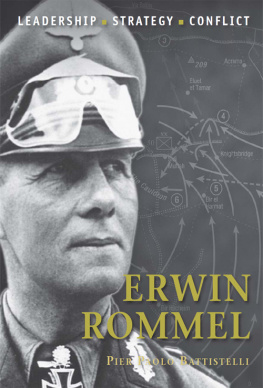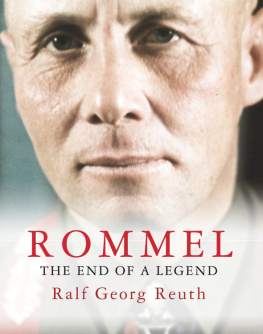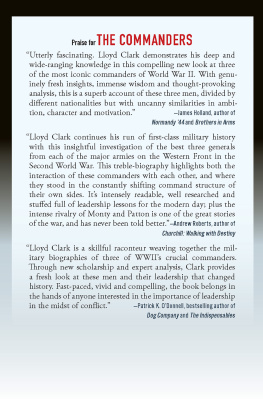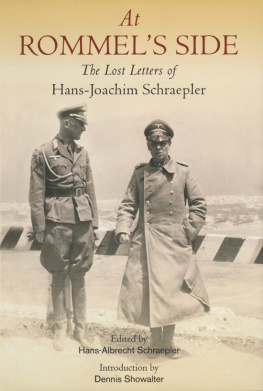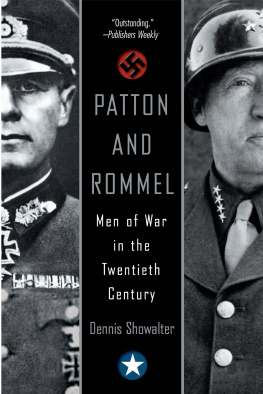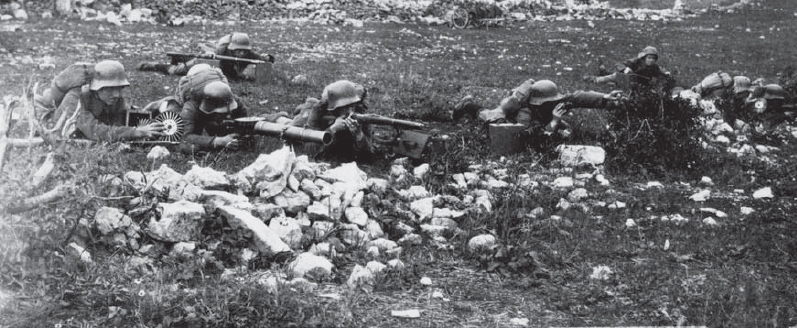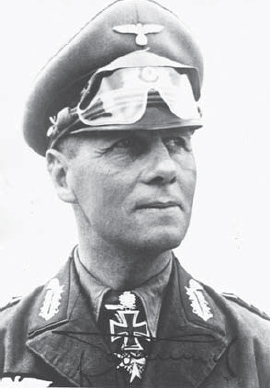INTRODUCTION
The man and his myth. The problem when dealing with German generals of World War II is distinguishing between myth and reality. This is particularly difficult given that their histories and characters are constantly being re-examined. The myth of Erwin Rommel the Desert Fox has proved to be particularly long lasting. There are many historical issues surrounding his true merits as a military commander and the extent of his actual involvement in the anti-Hitler conspiracy, and yet on close inspection he comes across as a simple, straightforward man whose talents and character ensured his success in the very particular circumstances that arose throughout his career.
Erwin Rommel, the Desert Fox in a typical portrait. Other than the captured British sand goggles, he sports the Pour le Mrite and the Knights Cross with oak leaves, which were awarded on 20 March 1941. (HITM)
Rommels family background provides few clues to his future military success. He was born far away from militarist Prussia; in the Austro-Prussian war of 1866 Wrttemberg, his homeland, was an Austrian ally and as such was defeated, eventually becoming part of the new German Empire (though still retaining its own army as an independent entity in the new German Army). His family had no military background, and he himself displayed no interest at all in a career in the army during his boyhood. His only known childhood enthusiasm was for aeronautical engineering and a desire to work for the renowned Zeppelin works.
As a cadet Rommel was workmanlike rather than impressive, and it would take the first battlefield tests to reveal how Rommels talent and character, supported by a solid military education, had produced a brave and effective commander.
Rommels performance in World War I earned him a position in the small post-war army of the Weimar Republic, the Reichswehr. Again, he neither excelled nor failed and would have most probably ended his career as a divisional or, at best, corps commander had it not been for his close relationship with Hitler. Thanks to this relationship he was given command of one of the ten Panzer divisions that fought, and won, the campaign in the West in spring 1940. It was a unique opportunity that enabled Rommel to distinguish himself and paved the way for his appointment as commander of the German Afrikakorps, the assignment that made his name famous all over the world.
There have been many volumes written on the war in the desert and surely more to come. What is clear is that Rommel defined the Axis presence in the theatre both in the minds of his adversaries and to writers ever since. This has ensured his elevation into that small clique of commanders whose fame is not measured by their battlefield successes or failures. And there were failures. His career in North Africa ended in defeat and he could well have spent the remainder of the war employed in a high-level staff role or in some strategic sideshow. However, his appointment to oversee the defence of Western Europe against the Allied invasion ensured his continuing fame, though only serious injury spared him from defeat in Normandy. However, it did not spare him his eventual fate. Whether he was involved in the plot to assassinate Hitler or not, his decision to commit suicide to avoid trial and repercussions against his family would be the final step in the process of turning the man into a myth. Like Patton, Rommel did not survive the war but has endured in popular imagination as one of the defining commanders of the period. This post-war myth has survived for many years, perpetuated by a mixture of facts and propaganda.
THE EARLY YEARS
Erwin Johannes Eugen Rommel was born at Heidenheim, near Ulm (in the duchy of Swabia, part of the kingdom of Wrttemberg in south-west Germany), on 15 November 1891, the second of four children three sons and one daughter. His father, Erwin Rommel, was a teacher of mathematics at a secondary school at Heidenheim (later a headmaster at Aalen) and his mother, Helene von Luz, was the daughter of a local government official. The young Rommel displayed a greater aptitude for outdoor activities than academic studies, though he did show some ability at mathematics. By the time Erwin started his three-year course at Realgymnasium at the age of 16, his fate had already been decided; he would join the army. This was only possible for those who, like Rommel, had an upper-middle-class background, and even then it was not easy.
German officers were recruited at a local level by regiments and, following their training, they were commissioned by the commanding officer following a vote by the other officers. This system ensured that the officer ranks were filled with those of the required social background. The most prestigious units cavalry or guards regiments were essentially reserved for members of the nobility or those families with a long tradition of military service. Even Rommels first choices, the artillery and engineers, were beyond his grasp, and on 19 July 1910 the young Erwin Rommel became a Fahnenjunker (officer candidate) in Infanterie-Regiment Knig Wilhelm I (6. Wrttembergisches) Nr. 124 in Weingarten. After eight months of training he was sent to the Kriegsschule in Danzig in March 1911; this was the equivalent of a military academy and gave a standardized course of training to all the officers of the German Army. (There were ten of them across the country, established in 1810.) Rommel graduated on 15 November 1911, having met his future wife, the 17-year-old Lucia Maria Mollin, whom he called Lucie. Back with his regiment, Rommel was commissioned Leutnant (second lieutenant) on 27 January 1912 and began training recruits himself.
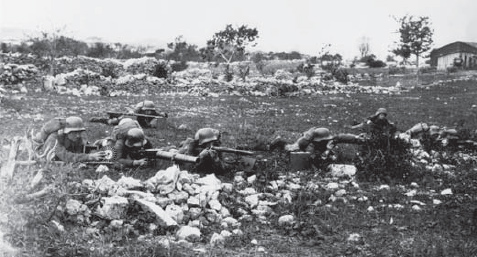
A German Stosstrupp (assault detachment) training on the Isonzo front, October 1917. Their armament includes two British Lewis machine guns. (Private collection)
The concluding remarks of the Danzig Kriegsschule are worth noting; Rommel was average in all areas apart from leadership, in which he was classified good. Rommels service with IR 124 lasted until 1 March 1914, when he was attached to Feld-Artillerie-Regiment Nr. 49 at Ulm; here he served in the 4. Batterie until 31 July. He was back with IR 124 on 1 August 1914, the day World War I started, and two days later he and his unit left for the Western Front as part of 5. Armee. From 21 August Rommel was in action in the Meuse Valley on the Verdun front, first as a platoon commander then as regimental aide. On 24 September he was wounded in the thigh, hospitalized and on the 30th awarded the Iron Cross second class. He was back with his regiment in January 1915, now commanding its 9. Kompanie, in time to be part of another attack against Verdun. On 29 January he led his company in attack, only to be soon surrounded by the French; through inspired leadership he managed to clear the enemy positions and get back to the German lines. That earned him the Iron Cross first class on 22 March, the first lieutenant of his regiment to receive this award. In June Rommel, now a platoon commander owing to the arrival of a new intake of officers, took part in an offensive in the Argonne; in July he was slightly wounded in the leg, which earned him a spell of leave back home and then, in September, he was promoted to

